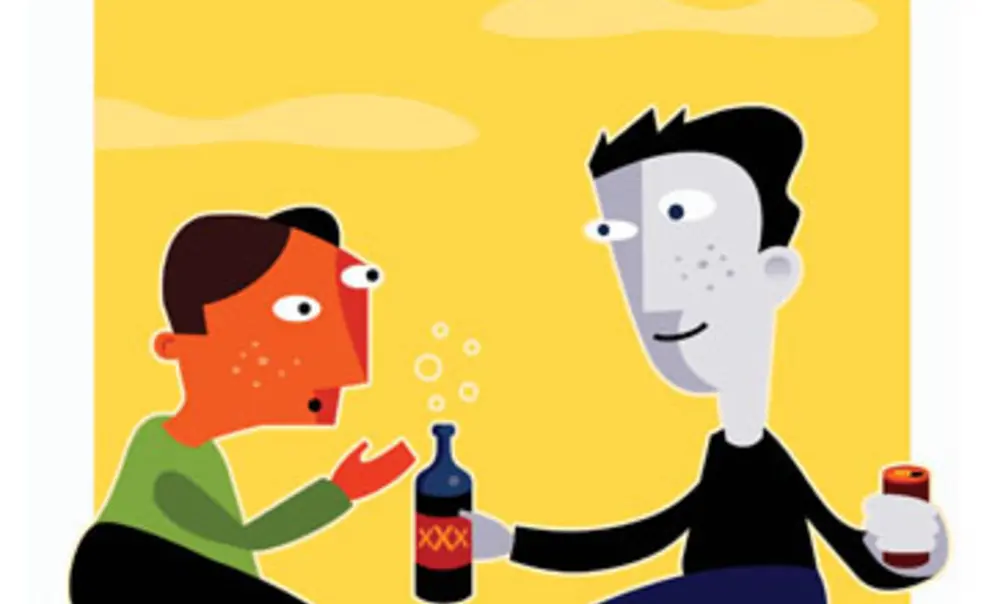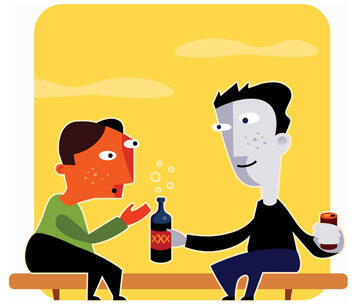Coalition: Explore new ideas to cut high-risk drinking
High-risk drinking is on the rise at American colleges, and Princeton must engage students and partner with campus groups to address the problem, according to a plan released May 13 by the Alcohol Coalition Committee, a University-appointed group of students, faculty, and staff.
The committee outlined three broad recommendations: to create a standing committee to propose and review alcohol initiatives; to examine new ideas in areas that include alcohol education, communication, and campus programs and events; and to use data to better understand the scope of the problem and measure progress.
The prominence of eating clubs and other group affiliations creates a demanding social scene for Princeton undergraduates, the report said, and “students regularly report consuming alcohol because of strong pressures to succeed socially.” While the report did not detail the prevalence of high-risk drinking on campus, Princeton stands “largely in line with national trends,” according to Sanjeev Kulkarni, a professor of electrical engineering who co-chaired the committee with Agatha Offorjebe ’09. Committee members reviewed information about alcohol-related admissions to University Health Services, Public Safety calls, and University disciplinary actions.
The committee cited the common practice of “pre-gaming” — consuming large amounts of alcohol quickly to prepare for a night out on “the Street” — as one example of high-risk drinking and suggested that eating clubs consider adding alcohol-free events “to combat the impression that alcohol is a prerequisite to socializing in the clubs.”
Among the dozens of ideas for consideration listed in the plan were several intended to promote responsible drinking, including the creation of a campus pub, a ban on hard alcohol in dormitories, a repeal of the 17-year-old ban on kegs in dorms, and the addition of a party-registration system, in which students of legal drinking age could host parties in their dorm rooms with underage students in attendance, as long as the underage students abstained from drinking.
Party registration is one initiative from the plan that already is moving forward. The University also plans to re-evaluate the alcohol education course that freshmen complete during orientation and add a section about alcohol use and the undergraduate experience to the exit survey that seniors complete each May.
Kulkarni, who also serves as the master of Butler College, said that student suggestions played a significant role in the committee’s plan. Undergraduates made up half of the committee and about half of the more than 300 attendees at three workshops held in February. But initially, not all students recognized a need to re-examine drinking on campus, Offorjebe said.
“When I first started meeting with students, [people asked] ‘Is high-risk drinking even an issue on campus? Why are we having this discussion?’ ” she said. “From the student perspective, it shifted from being focused on high-risk drinking to the drinking culture in general on campus. ... Once I started talking about it from a health and well-being standpoint, no students disagreed with me. It is very much a health issue.”
Josh Weinstein ’09, president of the Undergraduate Student Government, said the plan touched on two USG priorities: increasing funding for social events and improving student interactions with Public Safety officers.
The Alcohol Coalition Committee was formed in December 2007, shortly after the University caused a minor stir among undergraduates when it released new Residential College Adviser guidelines that aimed to reduce heavy drinking in residence halls. (The guidelines have since been revised.) The complete Alcohol Coalition Committee Strategic Plan is availible online here.












No responses yet